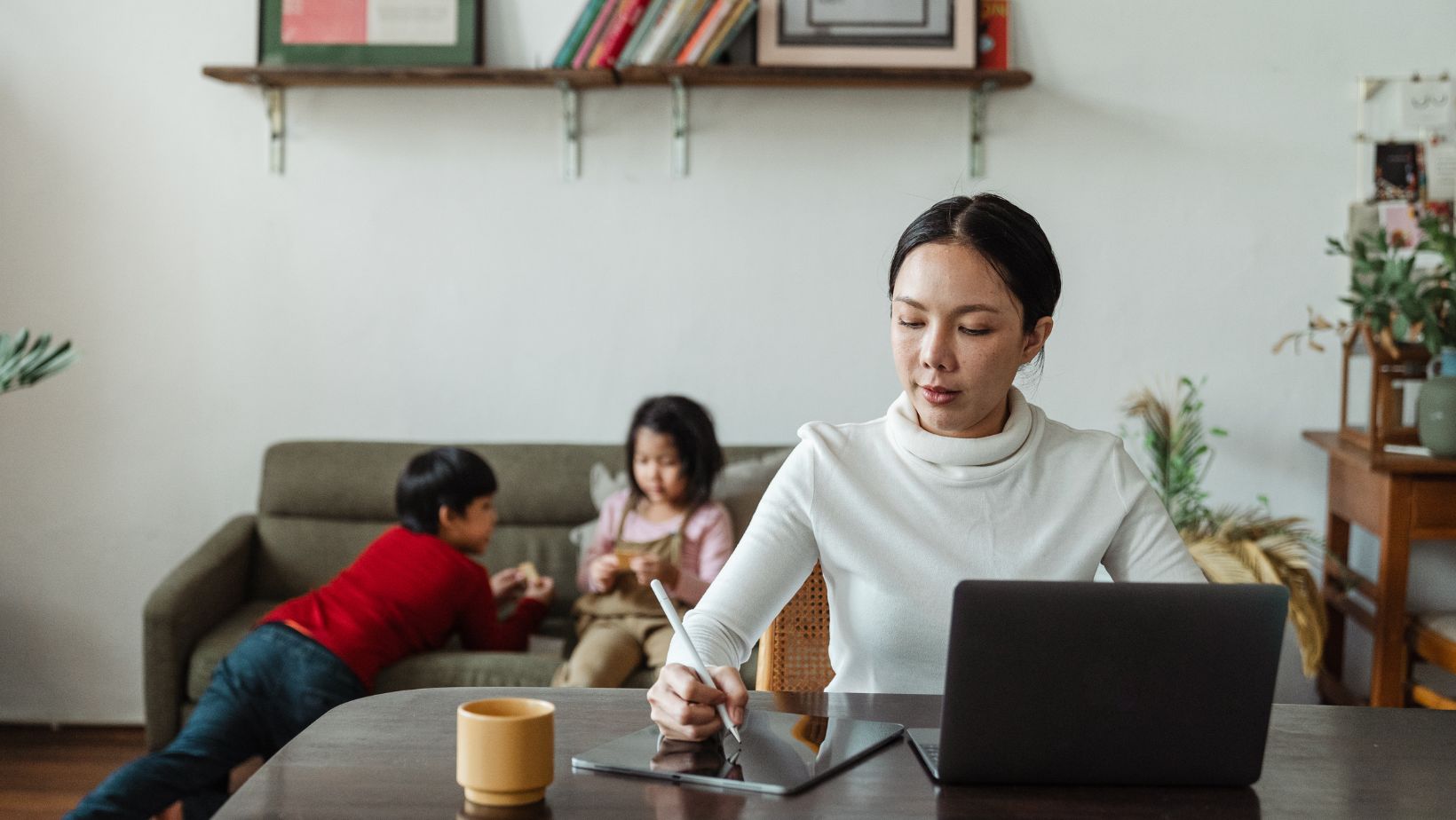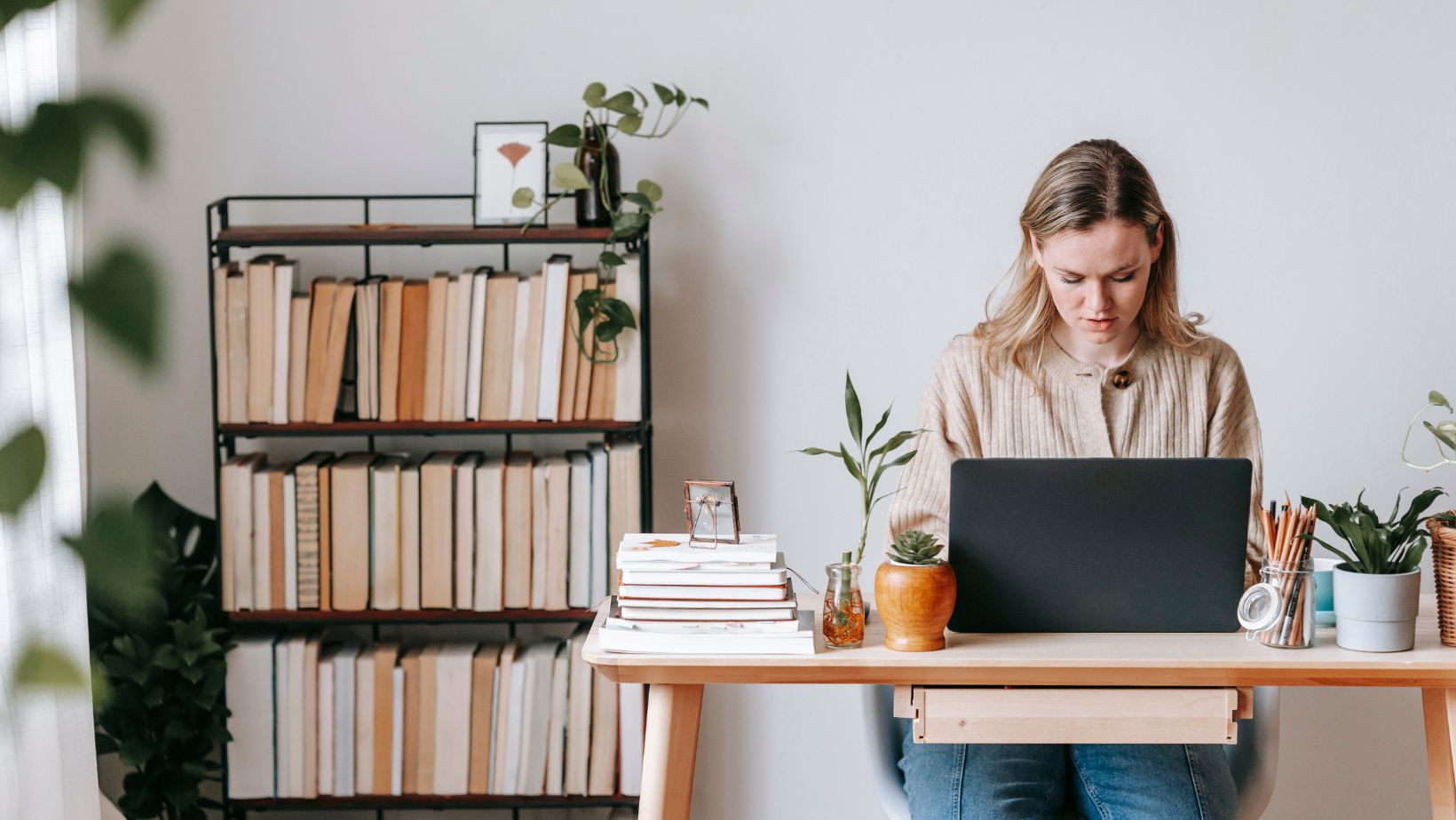
Remote and hybrid work have become the preferred work setups for people worldwide. Consequently, home offices have evolved beyond the makeshift home offices people put together during lockdown.
Many people design their home offices to add a personal touch to their workspace and promote productivity.
One crucial design element that can influence your work and well-being is color. Many harness the power of color psychology to create an optimized home office environment.
What is Color Psychology?
Color psychology highlights how colors affect human emotions and behavior, including creativity, productivity, cognition, and overall mood.
In workplaces, color psychology is used to promote employee morale and performance. On a smaller scale, you can also apply color psychology to your home office to improve your daily work life.
How to Use Color in Your Home Office
Here are eight colors and how to use them to maximize productivity and creativity:
Blue
Blue is a popular choice for workplaces. It’s a cool and calming color, which helps employees feel more stable. It also helps employees stay focused and productive.
For your home office, it would be beneficial to have blue in your line of sight. You can paint the wall behind your computer monitor in your favorite shade of blue.
If you don’t want to do any major decoration projects, you can use blue as your decor color scheme.
Green
Green is another calming color, and it’s associated with balance. Adding green to a workspace can relax you and help you be more creative and productive.
Many offices use green as a design choice. You can use green at home by adding plants near or on your work desk. You can also paint the wall with a calm shade of green, like sage or olive.
Green is also a good color for your desktop wallpaper since it’s calming and easy for your eyes to process.
Red
Red is the color of passion. It’s associated with love, strength, and ambition. It’s a very striking color that can help stimulate your creativity and appetite and even increase your heart rate and blood flow.

However, too much red can also trigger aggression and cause eye strain. As a decor choice, red should be used sparingly.
To use red in your home office, stick to accent pieces. Add red flowers near your desk, or use a red pen holder. You can also use red for things that need attention, like a calendar or notebook.
Orange
Orange is a warm and cheerful color that can help you with energy and creativity. Orange can lift up your mood when used in moderation — if there’s too much orange, it might trigger frustration.
You can use orange as an accent for your home office. Since orange is versatile, you can also mix it with other colors like white and green.
Like red, orange can also stimulate appetite, so you can use it when you take a break for a drink or a snack. You can use an orange mug when you drink coffee and contemplate ideas for your next project.
Yellow
Yellow is a bright and optimistic color. It helps lift your mood while boosting creativity. Yellow can also help encourage teamwork.
At home, you can use yellow for your decor in moderation. Yellow is a bright color that can hurt your eyes if used in large spaces. You can use yellow in small decor pieces or flowers. You can also use it as your digital background for online group meetings to encourage collaboration.
Studies show that yellow, red, and orange are more attention-grabbing than other colors. Thus, you can use these warm hues to help with reminders and tasks.
You can use a yellow highlighter to help you remember data. You can also use a warm-colored notebook or planner to help you keep track of your schedules.
Black
Black is a color that evokes power and authority. When used in moderation, black can appear luxurious and modern. However, when used in excess, it can make a space look glum and depressing.
Black is best used in combination with other colors, textures, and metals. For your home office, you can use a black and wood table to strike a balance between warmth and power. You can also use a black ergonomic chair.
Brown
Similar to black, brown evokes power and authority, but it’s softened by its connection to nature. It has a masculine appeal but with an added warmth. Brown is associated with resilience and dependability, so you can add this color to your home office for a feeling of stability. However, an excess of brown can feel isolating, empty, and stifling.
Brown is best utilized through wood and leather. You can use a beautiful brown leather office chair and a wood table. To keep brown interesting, add greenery through plants. You can also add splashes of other colors through decorative items.
White
White is a blank slate. Many choose white as a decor choice because it has a pure and clean look, bringing a sense of calm and neutrality.
White can make spaces feel larger and brighter. It adds freshness and ease to spaces, but it can seem sterile or boring if used in excess.

White is versatile — it can look modern or classic, depending on how you use it. You can use white furniture in your office to add a chic and clean feeling. You can also use white mixed with other colors to brighten up your office.
Add Color to Your Home Workplace
Color is a powerful tool that you can use to boost your performance at work. Now that remote and hybrid work is commonplace, you can make the necessary design choices to make your work life easier. Think of the psychology of colors, and add the right hues to your home office to keep you productive.























